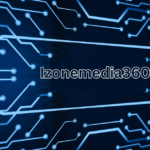Remote employee tracking refers to the various methods and technologies used to monitor and manage employees working outside the traditional office environment. As remote work becomes increasingly prevalent, organizations need effective tools to ensure productivity and accountability. Remote employee tracking encompasses time tracking software, activity monitoring tools, and even geolocation tracking. These tools help managers gauge work hours, assess productivity, and ensure employees are adhering to company policies. With the shift towards remote work, tracking systems have become crucial for maintaining operational efficiency and managing dispersed teams.
The importance of remote employee tracking extends beyond mere oversight. It helps organizations understand how their remote teams are performing, identify potential issues, and optimize workflows. By implementing robust tracking systems, companies can ensure that remote employees remain engaged and productive. These systems also provide valuable insights into employee performance, helping managers make informed decisions about resource allocation and team dynamics.
Data leak prevention (DLP) involves strategies and technologies designed to prevent unauthorized access, transfer, or disclosure of sensitive information. As organizations increasingly rely on digital platforms and remote work, protecting sensitive data from leaks has become paramount. DLP encompasses a range of practices, including encryption, access controls, and continuous monitoring. These measures are crucial for safeguarding confidential information and ensuring compliance with data protection regulations.
Data leaks can have severe consequences, including financial losses, legal penalties, and reputational damage. Effective DLP strategies help organizations mitigate these risks by implementing safeguards that prevent unauthorized data access and transfer. By prioritizing data security, companies can protect their valuable information assets and maintain trust with clients, partners, and stakeholders.
The Growing Need for Remote Employee Tracking
Trends in Remote Work
The trend towards remote work has accelerated in recent years, driven by advancements in technology and changing workforce expectations. According to recent statistics, remote work has increased by over 50% since the onset of the COVID-19 pandemic. This shift presents unique challenges for organizations, including managing remote employee productivity and ensuring effective communication across dispersed teams.
As remote work continues to grow, organizations must adapt their management practices to accommodate new work environments. Remote employee tracking tools have become essential for monitoring performance, ensuring accountability, and maintaining operational efficiency. These tools provide insights into employee activity, helping managers identify areas for improvement and optimize team performance.
Benefits of Employee Tracking
Employee tracking offers several benefits that are particularly valuable in remote work settings. First and foremost, tracking tools enhance productivity by providing visibility into employee work patterns and activity levels. This information allows managers to identify productivity trends, address potential issues, and implement strategies to improve performance.
In addition to productivity gains, employee tracking helps improve accountability. By monitoring work hours, activity levels, and task completion, organizations can ensure that employees are meeting their performance expectations. This increased accountability fosters a culture of responsibility and can lead to higher overall performance and job satisfaction.
Types of Remote Employee Tracking
Time Tracking Software
Time tracking software is a fundamental tool for monitoring employee work hours and ensuring accurate payroll management. These tools allow employees to log their work hours, track breaks, and manage their time effectively. Advanced time tracking software often includes features such as automated reminders, project tracking, and integration with other productivity tools.
Best practices for using time tracking software include setting clear expectations for employees regarding time logging, providing training on the software’s features, and regularly reviewing time logs to ensure accuracy. By implementing effective time tracking practices, organizations can streamline payroll processes, identify potential inefficiencies, and maintain transparency with employees.
Activity Monitoring Tools
Activity monitoring tools provide insights into employee behavior and work patterns by tracking application usage, website visits, and keystrokes. These tools help managers understand how employees spend their time during work hours and identify potential productivity issues. Activity monitoring can also help prevent unauthorized access to sensitive information and ensure compliance with company policies.
While activity monitoring tools offer valuable insights, it’s essential to use them judiciously. Overly intrusive monitoring can lead to employee dissatisfaction and a lack of trust. Balancing monitoring with transparency and open communication is crucial for maintaining a positive work environment and ensuring that employees feel respected and valued.
Geolocation Tracking
Geolocation tracking involves using GPS technology to monitor the physical location of remote employees. This type of tracking is often used for field-based roles or situations where location is critical for job performance. Geolocation tracking can help organizations ensure that employees are working from designated areas and can provide valuable data for managing logistics and resource allocation.
Privacy considerations are a significant aspect of geolocation tracking. Organizations must be transparent about their use of geolocation data and ensure that employees are aware of how their location information will be used. Establishing clear policies and obtaining employee consent are essential steps in implementing geolocation tracking effectively and ethically.
Implementing Remote Employee Tracking: Best Practices
Choosing the Right Tools
Selecting the appropriate tracking tools is crucial for achieving effective remote employee management. Factors to consider when choosing tracking tools include ease of use, integration with existing systems, and the specific needs of your organization. Popular tools include time tracking software like Toggl and Harvest, activity monitoring tools like Hubstaff, and geolocation tracking apps like GeoTracker.
When evaluating tracking tools, consider features such as real-time reporting, customizable alerts, and scalability. It’s also important to assess the level of customer support and training provided by the tool’s vendor. By choosing the right tools, organizations can streamline tracking processes, enhance productivity, and improve overall team performance.
Balancing Transparency and Privacy
Balancing transparency and privacy is essential for maintaining trust and morale among remote employees. Clear communication about tracking policies and practices helps employees understand the purpose of monitoring and how their data will be used. Transparency fosters a positive work environment and helps prevent misunderstandings and concerns.
Establishing privacy guidelines and obtaining employee consent are crucial steps in ensuring that tracking practices are respectful and compliant with legal requirements. Regularly reviewing and updating tracking policies in response to employee feedback and changing regulations can help organizations maintain a fair and effective approach to remote employee management.
Understanding Data Leak Prevention
What Constitutes a Data Leak?
A data leak refers to the unauthorized access, transfer, or disclosure of sensitive information. Data leaks can occur through various means, including cyberattacks, employee negligence, or accidental exposure. Common types of sensitive data at risk include personal identification information, financial records, and confidential business information.
The consequences of data leaks can be severe, ranging from financial losses and legal penalties to reputational damage and loss of customer trust. Organizations must implement robust data leak prevention strategies to protect sensitive information and mitigate the risks associated with data breaches.
Key Data Leak Prevention Strategies
Effective data leak prevention involves a combination of technical measures and best practices. Key strategies include:
- Encryption Techniques: Encrypting sensitive data ensures that it is protected from unauthorized access, even if it is intercepted or exposed. Encryption should be applied to data at rest, in transit, and during processing.
- Access Control Measures: Implementing strict access controls ensures that only authorized personnel can access sensitive information. This includes using multi-factor authentication, role-based access controls, and regularly reviewing access permissions.
- Regular Audits and Monitoring: Conducting regular audits and continuous monitoring helps identify potential vulnerabilities and detect suspicious activity. This includes reviewing access logs, monitoring network traffic, and performing vulnerability assessments.
By employing these strategies, organizations can enhance their data security posture and reduce the risk of data leaks.
Integrating Tracking and Data Leak Prevention Systems
How Tracking Tools Can Aid Data Security
Remote employee tracking tools can play a significant role in enhancing data security. By monitoring employee activity and access to sensitive information, organizations can identify potential threats and prevent unauthorized data access. For example, activity monitoring tools can alert managers to unusual behavior, such as accessing sensitive data outside of regular work hours.
Tracking tools can also help enforce data security policies by ensuring that employees adhere to established protocols for handling sensitive information. By integrating tracking and data leak prevention systems, organizations can create a comprehensive approach to data security that addresses both employee performance and information protection.
Best Practices for Integration
Integrating tracking and data leak prevention systems requires careful planning and coordination. Key best practices include:
- Ensuring Compatibility: Choose tracking and DLP tools that are compatible with your existing systems and infrastructure. This ensures seamless integration and minimizes disruptions to your operations.
- Establishing Clear Protocols: Develop clear protocols for how tracking data will be used in conjunction with data security measures. This includes defining how tracking information will be analyzed, reported, and acted upon to enhance data security.
By following these best practices, organizations can create a unified approach to remote employee management and data security that maximizes effectiveness and minimizes risk.
Legal and Ethical Considerations
Legal Requirements for Employee Tracking
When implementing remote employee tracking, organizations must comply with various legal requirements and regulations. These requirements vary by jurisdiction and may include laws related to privacy, data protection, and employee rights. Key legal considerations include:
- Data Protection Regulations: Compliance with regulations such as the General Data Protection Regulation (GDPR) or the California Consumer Privacy Act (CCPA) is essential for protecting employee privacy and ensuring data security.
- Employment Laws: Adhering to employment laws related to employee monitoring and surveillance is crucial for avoiding legal disputes and maintaining a fair work environment.
Organizations should consult legal experts and stay informed about relevant regulations to ensure that their tracking practices are compliant and ethical.
Ethical Implications
The ethical implications of remote employee tracking involve balancing oversight with respect for employee privacy. While tracking tools can provide valuable insights into employee performance, it is important to use them in a way that respects individual privacy and fosters trust.
Best practices for ethical monitoring include:
- Transparency: Clearly communicate tracking policies to employees and provide information about how their data will be used.
- Consent: Obtain employee consent for tracking practices and ensure that they understand the purpose and scope of monitoring.
By addressing ethical considerations, organizations can create a positive work environment and maintain employee trust while effectively managing remote teams.
Also Read: Business Etiquette in Peru
Case Studies
Successful Implementation in Tech Companies
Several tech companies have successfully implemented remote employee tracking and data leak prevention systems. For example, a leading software development firm adopted a comprehensive tracking system that integrated time tracking, activity monitoring, and data security measures. This approach allowed the company to enhance productivity, improve project management, and protect sensitive information.
The successful implementation of these systems resulted in increased efficiency, reduced data breaches, and improved employee satisfaction. By leveraging tracking and data security tools, the company was able to achieve its operational goals while maintaining a high level of data protection.
Lessons Learned from Data Breaches
Data breaches provide valuable lessons for organizations looking to improve their data security practices. For instance, a high-profile data breach at a major retailer highlighted the importance of implementing robust data leak prevention measures. The breach, which resulted from inadequate access controls and lack of encryption, led to significant financial and reputational damage.
Key takeaways from this incident include the need for regular security audits, the importance of encryption, and the value of employee training in data protection practices. By learning from past breaches and implementing effective data security measures, organizations can better protect their sensitive information and reduce the risk of future incidents.
Future Trends in Remote Employee Tracking and Data Security
Emerging Technologies
Emerging technologies are shaping the future of remote employee tracking and data security. Key trends include:
- AI and Machine Learning: AI and machine learning technologies are increasingly used to enhance tracking and data security systems. These technologies can analyze vast amounts of data, identify patterns, and detect potential security threats in real-time.
- Blockchain for Data Security: Blockchain technology offers a decentralized and secure way to manage and protect data. By using blockchain for data security, organizations can create tamper-proof records and enhance data integrity.
These technologies are expected to play a significant role in the evolution of remote employee tracking and data security, providing new solutions for managing remote teams and protecting sensitive information.
Predictions for the Next Decade
The next decade will see continued advancements in remote work and data security practices. Predictions include the increased adoption of advanced tracking and security technologies, greater emphasis on employee privacy, and the development of more sophisticated data protection measures.
Organizations will need to stay agile and adapt to these changes to remain competitive and secure. By embracing emerging technologies and implementing best practices, companies can navigate the evolving landscape of remote work and data security effectively.
Conclusion
Remote employee tracking and data leak prevention are critical components of managing a successful remote workforce. Tracking tools help organizations monitor productivity, ensure accountability, and optimize team performance. Data leak prevention strategies protect sensitive information from unauthorized access and potential breaches.
Effective implementation of tracking and data security measures requires careful planning, transparency, and adherence to legal and ethical standards. By choosing the right tools, balancing privacy with oversight, and staying informed about emerging trends, organizations can create a secure and productive remote work environment.








